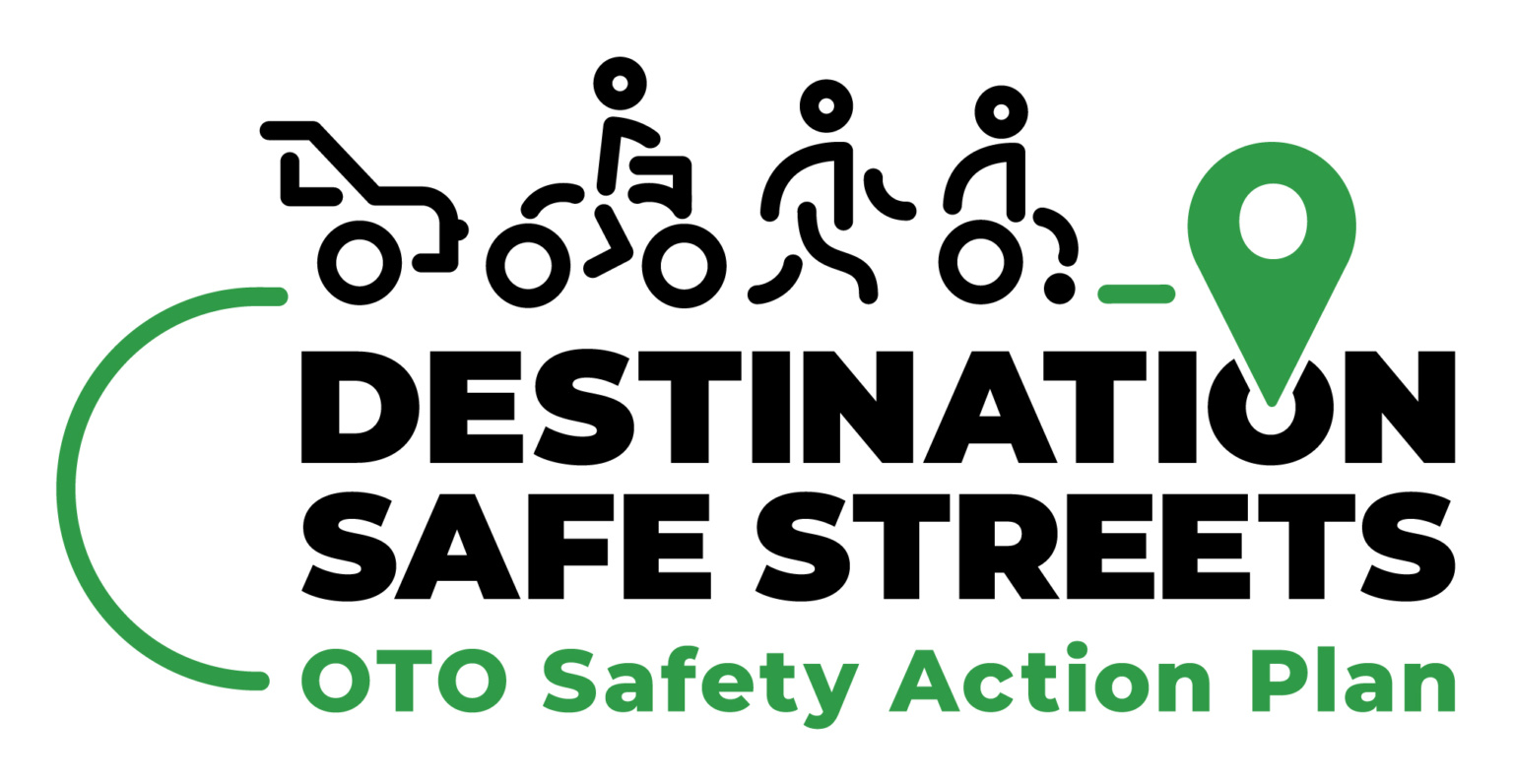Have you heard about “Destination Safe Streets” – the development of a Regional Safety Action Plan by the Ozarks Transportation Organization (OTO)? Last year, OTO was awarded a Safe Streets and Roads for All grant from the U. S. Department of Transportation. The grant funds are used to support the development of a comprehensive Regional Safety Action Plan. With this plan in place, OTO will be able to apply for implementation grant funding in future years.
OTO wants community input to help make streets in our region safer for all users. Last month, OTO kicked off the Safety Action Plan campaign to inform the community about the grant with outreach materials about some of the transportation safety issues in the region. The OTO planning area is Christian County, Greene County, Battlefield, Nixa, Ozark, Republic, Springfield, Strafford and Willard. An online survey was available earlier this year. Updates and information about the project are available on the OTO website: ozarkstransportation.org.
In working with many decision makers in the region, I listen to their discussions during and after community engagement sessions. I hear their sincerity after hearing lived experiences from community members. Many times, they want even more input when they do not see representation from all regional populations and intersectional groups. They find when extra effort is made to hear from smaller populations of people and groups, they hear ideas, thoughts and concerns they would not hear when the outreach focus is only designed towards larger populations and groups
OTO is ensuring opportunities are provided for input with a variety of outreach tools to develop the Regional Safety Action Plan. The plan will be used to make the streets in the region safer for all users. OTO approach is to meet people where they are and match their input and lived experiences for qualitative data, matched with quantitative data for a solid plan. OTO is focusing even harder to outreach in areas where voices are not well heard. Through community events and open house workshops, they are taking OTO to the people instead of expecting the people to come to OTO.
Public engagement is critical for infrastructure decision making to make sure what is developed will be used and supported. When a person has a voice and know they have been heard, they are more likely to support the outcomes of different plans. OTO approach to community engagement is designed to ensure the final safety plan aligns with the goals of the local community. The plan must be designed to safely move people who are walking, biking, using adaptive mobile equipment, taking public transportation and/or driving.
The plan is being developed with clear accountability to create a safety plan with key engagement goals, tasks, and an implementation schedule. The safeguard for community members to have access to information and provide input is to use in person and online outreach tools. OTO held community events during the day and evening with paper surveys, QR Codes, Face Book posts and online surveys. They created an advisory group and a website with educational information, data, charts, studies and other outreach tools.
OTO believes the community events and public stakeholder workshops will help them reach the widest populations of people with representation from all regional residents and visitors for inclusivity of all racial/ethnic populations with intersectional groups. With this type of input from young children to the elderly, they can work to identify important matters that may be overlooked by smaller populations of people. OTO has also design a professional group of participants with members from emergency responders and post-crash care providers. These professional participants will contribute to an extensive and meaningful safety plan that is doable and supported by the community.
In the next few months, OTO plans to conduct needs assessment workshops with stakeholder groups to better understand safety concerns and issues. The outcome from the stakeholder workshops, with the community input, will lead to the development of a draft plan. During the summer, the community will have an opportunity to engage again and provide input. The OTO website has a map of the areas of concern and other educational information about the project. The use of a public engagement approach to enhance road safety is an effective way to hear the needs of community members and stakeholders.
I encourage readers to visit the OTO website to read the fact sheet for the project and to see upcoming engagement opportunities: ozarkstransportation.org/ss4a.


